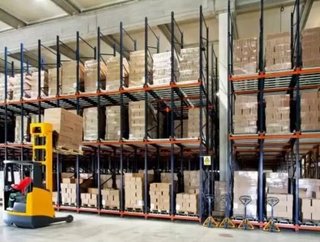Improving supply chain visibility through RFID

For years retailers have relied on Radio Frequency (RF) EAS labels to help decrease shrinkage and ensure merchandise is available for customers to purchase. However, with increased competitors and greater pressures from consumers, retailers are seeking ways to further streamline operations and optimise their inventory.
As a result, major retailers are now looking to Radio Frequency Identification (RFID) to improve visibility from the point of manufacture, throughout the supply chain and crucially in-store from the back room to the shop floor, all the way to the exit door.
With the attachment of an RFID tag that conforms to GS1’s EPC global standards, each item in a retailer’s supply chain and stores can be uniquely identified by its attributes such as size, colour and style. This allows retailers greater inventory control and visibility, enabling them to reduce out-of-stocks, increase shelf availability, and drive more sales both in-store and online. Additionally the same RFID tag being used for inventory management can help retailers better manage shrinkage by identifying items that may have been stolen so they can be replenished, further improving inventory accuracy and shelf availability.
Bill McBeath, Chief Research Officer with Chain Link Research, one of the most widely respected research and advisory firms in supply chain management, said: “With intense competition coming from all sides from Amazon and other online channels, discount warehouses and new players to market, it is more important than ever for retailers to differentiate their offer with a unique customer experience.
“It is here that RFID can play a key role and retailers are finding creative new uses for it every day to transform the customer experience.”
RFID’s maturation into mainstream apparel retailing is illustrated by the uptake from some of the biggest high street establishments. These retailers are seeing a clear reduction in out-of-stocks while increasing the on-shelf availability of items which enhances the customer experience.
Indeed, RFID is able to identify each unique SKU and distinguish between styles, colours and sizes, all the time allowing complete traceability throughout the supply chain.
This traceability means logistics can be fully automated, keeping errors to a minimum and stock control accuracy at 95 percent and 99 percent efficiency; minimising out-of-stocks.
In addition, RFID-based inventory audits can identify apparel items that are out of season and therefore need to be removed from the shelf, or hard goods such as pharmaceuticals or consumer packaged goods which may have an expiration date. The increased granularity of RFID-based inventory management results in further improved inventory management systems and better customer experience.
In the same vein, “smart shelves” know how many and which SKUs they carry and which are most popular with shoppers. RFID also offers the possibility of personalised, interactive marketing messages as customers tour a store either via a smartphone, tablet or on in-store screens. This includes relaying messages about the apparel, making accessory suggestions or highlighting personalised offers and promotions.
Retailers that have invested in RFID technologies are reaping the benefits in stock control, customer experience and profit margins. Those who are yet to invest are lagging behind and will ultimately see this reflected in their comparable performance. Essentially, the key to successful retailing lies in merchandise availability and RFID ensures stock levels are optimised to meet consumer demand.
By Neil Mathews, Vice President, Checkpoint Systems.






